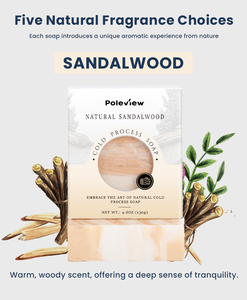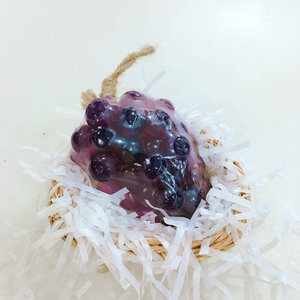(69531 products available)



























































































































































































Soaps are divided into many different kinds depending on their composition, use, and smell. Soap quality is determined based on the ingredients used to make them and their targeted market. Here is a list of different types of soaps:
Luxury soaps
These are classified under high-end soaps, usually at a higher price than other types of soaps. They are made using quality ingredients and are specifically targeted towards a more affluent market. They are usually handmade, which makes them more expensive and less accessible to everyone.
Medicinal soaps
These are soaps made using certain chemicals that can help treat skin conditions such as eczema and psoriasis. They can be purchased either over the counter or through prescription, depending on the severity of the skin condition. They are made with coal tar, phenol, and salicylic acid.
Organic soaps
Organic soaps are made using plant-based ingredients, oils, and butter. They are also free from any chemical additives and synthetic fragrances and are considered safe for use by people with sensitive skin. They are also environmentally friendly, as their production does not involve harming the environment.
Antibacterial soaps
These are soaps made with particular chemicals that can kill bacteria on the skin. They are made with triclosan and triclocarban. The FDA has stated that antibacterial soaps are no more superior than regular soaps when it comes to removing germs and bacteria.
Glycerin soaps
Glycerin soaps are usually transparent and made with glycerin, which is a natural moisturizer. They are perfect for people with dry skin and are not harsh on the skin. They can be made with vegetable glycerin, palm oil, and coconut oil.
Cold-pressed soaps
Cold-pressed soaps are made using a cold-pressed method where no additional heat is applied to the oils and butter. This ensures that all the natural benefits of the oils are not lost in the process. They are made with olive oil, coconut oil, and palm oil.
Castile soaps
Castile soaps originated from Spain and are made with olive oil and other plant-based oils. They are environmentally friendly and safe for people with sensitive skin. They are also free from any chemical additives and synthetic fragrances.
Exfoliating soaps
Exfoliating soaps are made with exfoliating ingredients like apricot kernel oil, oatmeal, coffee, or sugar. They help remove dead skin cells and promote the growth of new ones. They also help improve blood circulation.
Soap can be a great addition to any skin care routine. It is important to know how to use it well so that it can perform its best and provide a better cleansing experience.
How to Use
Using quality soap is simple. Wet the soap bar and run it against the skin. This produces a rich lather. It is also possible to use a washcloth or bath sponge to apply the lather across the skin. Focus on areas that need more cleansing, such as the armpits, feet, and groin. Once done, rinse with clean water to wash off the soap residue. It is that simple.
How to Use Liquid Soap
Using liquid soap is almost the same as using a bar soap. Wet the skin and apply a small amount of liquid soap on the washcloth or directly on the skin. Work it into a lather and then focus on areas that need deep cleansing. Rinse thoroughly with water. Liquid soap is ideal for washing hands since it usually comes in special dispensers for washing hands.
How to Use Soap for Bathing
Soaps can be used for bathing in two major ways. The first is by soaking in a tub full of warm water and placing the soap in the soaking water. It is important to note that only special bath soaps are made for this, as they have ingredients that soften the water and make the experience more pleasurable. The second is by using the soap bar or body wash to cleanse the body. After bathing, moisturize the skin with a suitable lotion or cream.
How to Use Soap for Facial Cleansing
Soaps made for facial cleansing are different from body soaps. They are specifically designed to cleanse the face and are usually made for different skin types. To use the soap, wet the face with warm water to open the pores. Create a lather with the soap and apply gently in circular motions. Focus on areas like the T-zone, which consists of the forehead, nose, and chin. Rinse off the soap residue with warm water and use a towel to pat dry the face. Apply a suitable moisturizer.
How to Use Soap for Exfoliating
Soaps with exfoliating properties can help remove dead skin cells for a smoother skin surface. To use the soap, create a rich lather and apply it over the body in circular motions. Focus on rough areas like the elbows and knees. Rinse thoroughly with water. People with sensitive skin should use the exfoliating soap once or twice a week.
Typically, there is no special installation required for soap. However, liquid soap usually comes in special dispensers that can be placed in the bathroom or kitchen sink. To install, simply place the dispenser on the sink and pump the liquid soap with one hand while the other hand cleanses it.
When purchasing soap, it is important to check for certain safety certifications. This includes CE markings, which indicate that the product meets European health and safety standards. Also, look out for products that have been approved by the American FDA. It follows strict guidelines to ensure that all quality soaps meet the required standards before being released to the market.
The design of quality soaps is focused on functionality. That is why most manufacturers will prioritize the ingredients above the aesthetics of the soap. Some of the functions, features, and designs of quality soap include the following:
Some soaps have antibacterial properties. They contain ingredients that help kill bacteria. The soap has a label indicating that it has antibacterial properties. These soaps are ideal for people who want to prevent bacterial infections.
Quality soap is made using quality ingredients. These ingredients are natural and organic. They have minimal chemical additives. The glycerin soap base used is of high quality. That is why the soap can retain most of its natural compounds.
Soaps that contain natural oils and butter like shea butter and coconut oil are more beneficial than those with synthetic additives.
Moisturizing soaps are designed to cleanse and moisturize the skin. They are made with humectants like glycerin. Glycerin attracts water to the skin. It keeps the skin moisturized. Some moisturizing soaps also have natural oils and butter that help hydrate the skin.
Quality exfoliating soap has ingredients that create exfoliating effects. It helps remove dead skin cells and any form of debris on the skin. The soap has roughness, which helps gently scrub the skin. It leaves the skin smooth and polished.
Natural scents are better than synthetic ones. They are soothing and have aromatherapy benefits. Some of the common natural scents are lavender, vanilla, and citrus.
Non-comedogenic soaps are designed for people with acne-prone skin. It has ingredients that won't clog pores. The skin can breathe and reduce breakouts.
Q1: What makes a soap good quality?
A1: Good quality soap has moisturizing ingredients like glycerin and oils. It has a pleasant scent and lathers well. The ingredients list should be simple, and the color should come from natural sources.
Q2: What is the difference between commercial and luxury soap?
A2: Luxury soap has a higher percentage of natural oils and fats than commercial soap. It undergoes a longer curing process, making it harder and longer-lasting. They are usually handmade in small batches, which allows for better quality control.
Q3: Can quantity be ordered?
A3: Yes. Ordering in bulk is possible. There are various options for customization and packaging available to suit the needs of different businesses.
Q4: Are the ingredients sustainable?
A4: Reputable manufacturers are aware of the impact of their production on the environment. They source their raw materials from sustainable sources. They also use eco-friendly packaging options for their products.